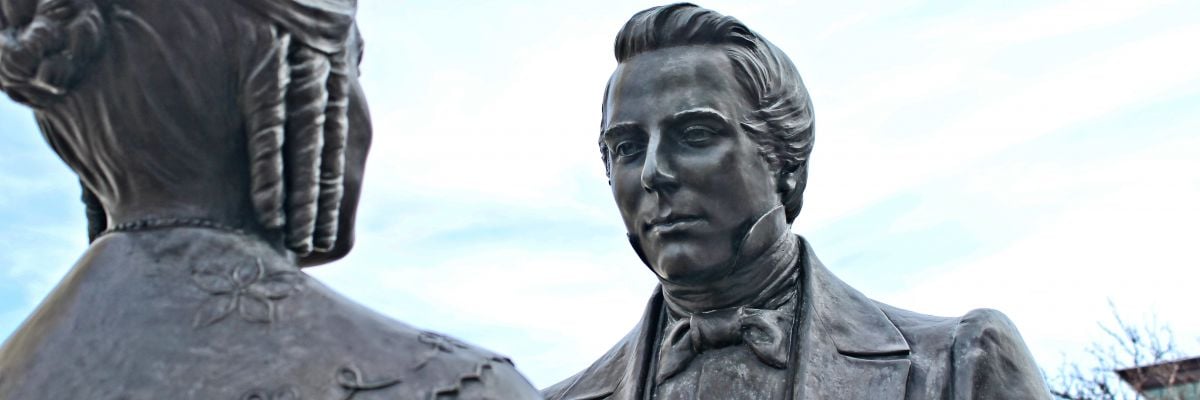
Question:
Answer:
Like many people of his period, Joseph Smith, the founder of Mormonism, harbored racist views. New York, where he grew up, was still a slave state at that time. In an environment where Negro slavery was tolerated, it was easy for Smith to look down on black people, and his disdain for them was incorporated as doctrine into the Mormon scriptures he allegedly translated.
For example, many passages in the Book of Mormon speak of dark skin as a curse for sins, as opposed to the “white and delightsome” appearance of the righteous (2 Nephi 30:6, cf. 1 Nephi 12:23, 13:15, 2 Nephi 5:21, Jacob 3:8-9, 3 Nephi 2:14-15, Moses 7:8, 12, 22). A passage in the “Book of Abraham” (1:26–27), that spoke of the Egyptian pharaohs as having Negro ancestry, thereby disqualifying them from God’s priesthood, was used by the Church of Jesus Christ of Latter-day Saints to deny the Mormon priesthood and temple privileges to anyone with any amount of Negro ancestry.
These passages in Mormon scripture served as the basis for every Mormon prophet since Smith to teach that blacks were cursed for their supposed sins before earthly birth. Brigham Young, Smith’s successor, also underscored the racist stand of Mormonism: “Shall I tell you the law of God in regard to the African race? If the white man who belongs to the chosen seed mixes his blood with the seed of Cain, the penalty, under the law of God, is death on the spot. This will always be so” (Journal of Discourses 10:109).
Throughout the civil rights movement in the 1950s and’60s, Mormon apostles continued to teach the LDS doctrine on people with African ancestry and other persons of color. Mark E. Petersen asserted that people are born black because of their inadequate performance in the pre-existence.
Bruce R. McConkie maintained “Negroes are not equal with other races” in spiritual matters and that this is God’s law, not man’s. The future prophet Spencer W. Kimball claimed that in just 15 years from the time of their conversion he had seen Indian people who accepted the Mormon gospel become “white and delightsome.”
But the civil rights movement had its effect the LDS Church. Black leaders urged boycotts of the state of Utah and all Mormon Tabernacle Choir products. The NAACP brought discrimination charges against the Utah Boy Scouts for prohibiting a black member from assuming a senior patrol position. College athletes refused to play Brigham Young University teams. Groups protested at the church’s twice-yearly general conferences in Salt Lake City.
Mormon leadership finally acknowledged that many, perhaps most, of the converts to the Church in Brazil had some degree of black ancestry. While their donations helped build the São Paulo Temple, they were not permitted to attend it.
By 1978, increased social repudiation of racism, coupled with Mormon evangelization in areas with large populations of racially mixed ancestry, led to one of the most drastic reversals in Mormon belief and practice: Those with Negro blood were allowed to attend the temple, and worthy black men could also hold the priesthood.
Dated June 8, 1978, and released the following day, President Kimball’s “Official Declaration—2” (as it is now called in the Mormon scripture Doctrine and Covenants) came after “extended meditation and prayer in the sacred rooms of the holy temple.” He presented the changed doctrine to his counselors, the Twelve Apostles, and other leaders, who approved it unanimously. The day has come, he said, when the Lord now grants to “every faithful, worthy man in the Church . . . the holy priesthood . . . [and] the blessings of the temple.” The declaration was presented to the general membership and ratified pro forma on September 30, 1978.
Though this opening of the priesthood to all races moved the Mormon Church into a less racist position regarding its practice, Mormon teaching remained unaltered. The new “revelation” did not change the previous Mormon teaching that people are born black because of their sins in the pre-existence.


